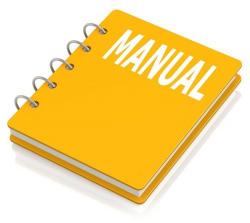BMW 2-valve Twins 1970-1993 Workshop Repair & Service Manual
Catalog:
Model:
Complete digital official shop manual contains service, maintenance, and troubleshooting information for the BMW 2-valve Twins 1970-1993. Diagnostic and repair procedures are covered in great detail to repair, maintain, rebuild, refurbish or restore your vehicle like a professional mechanic in local service/repair workshop. This cost-effective quality manual is 100% complete and intact as should be without any missing pages. It is the same factory shop manual used by dealers that guaranteed to be fully functional to save your precious time.
This manual for BMW 2-valve Twins 1970-1993 is divided into different sections. Each section covers a specific component or system and, in addition to the standard service procedures, includes disassembling, inspecting, and assembling instructions. A table of contents is placed at the beginning of each section. Pages are easily found by category, and each page is expandable for great detail. It is in the cross-platform PDF document format so that it works like a charm on all kinds of devices. You do not need to be skilled with a computer to use the manual.
Models covered:
R45. 473cc. UK only 1978 to 1985
R50. 498cc. UK 1970 to 1973, US 1969 to 1973
R60. 599cc. UK 1970 to 1978, US 1969 to 1978
R65, R65LS. 649cc. UK 1978 to 1988, US 1979 to 1987
R75. 745cc. UK 1970 to 1977, US 1969 to 1977
R80, R80/7, R80G/S*, R80GS, R80ST, R80RT. 797cc. UK 1977 on, US 1977 to 1987
R90/6, R90S. 898cc. UK and US 1973 to 1976
R100, R100/7, R100CS, R100GS*, R100R, R100RS, R100RT, R100S, R100SP, R100SRS, R100ST, R100T, R100TR. 979cc. UK and US 1976
to 1984, 1987 on
*Includes coverage of the Paris-Dakar versions
Note: The 4-valve engine introduced in 1993 is not covered
EXCERPT:
Contents
Introductory pages
About this manual
Introduction to the BMW Twins
Model dimensions and weights
Ordering spare parts
Safety first!
Tools and working facilities
Choosing and fitting accessories
Fault diagnosis 14
Routine maintenance 28
Chapter 1 Engine 59
Chapter 2 Clutch 90
Chapter 3 Gearbox 99
Chapter 4 Fuel system and lubrication 118
Chapter 5 Ignition system 147
Chapter 6 Frame and forks 152
Chapter 7 Final drive and rear suspension 171
Chapter 8 Wheels, brakes and tires
Chapter 9 Electrical system
Chapter 10 The 1986 on models 223
Wiring diagrams 255
English/American terminology 276
Conversion factors 277
Index
Introduction to the BMW twins
Although BMW's use of a shaft-drive motorcycle with a horizontally opposed twin-cylinder engine dates back to 1923, when the R32 model appeared. the machines described in this Manual were first introduced in 1969 to replace the high-quality R50/60/69S Earles Fork models which had been on sale since 1955, but were thought to be too unconventional in appearance to remain successful.
The major changes to the engine of the new machines were the substitution of a plain-bearing crankshaft for the previous ball-and-roller bearing component, the fitting of an electric starter and the use of a crankshaft-mounted alternator instead of the previous gear-driven dynamo. The camshaft, previously gear-driven above the crankshaft, was now mounted under the crank, driven by chain and used to drive the oil pump at its rear end; the repositioning of the camshaft had the effect of raising the cylinders for increased cornering clearance.
The most obvious changes were to the cycle parts, where a new frame gave a conventional appearance to the rear suspension, and where BMW reverted to the use of the telescopic fork; they had first used this type of front suspension in 1935 but had abandoned it in favor of Earles forks in 1955. The new suspension components were softly-sprung and gave a smooth, comfortable ride, which has become one of the marque's most popular features.
Although the machines described in this Manual have remained basically unchanged, especially by comparison with the products of the Japanese, most of their components have been modified in various degrees throughout their production life. The need to keep pace with the competition has resulted in larger-capacity engines with greatly increased power outputs and in the appearance of features such as five-speed gearboxes, disc brakes, cast alloy wheels and a much greater diversity of model types. Most of these changes can be seen by reference to the Specifications Section and/or introduction to each chapter.
Note however that as BMW have made it a policy to offer a wide range of equipment as optional extras, with the components fitted as standard to the more expensive models being available for the basic versions. and to keep all components interchangeable where possible, many machines may be found to differ considerably from the specifications given; these refer at all times to the machines in their standard, original, form with likely variations noted where possible. For example, it is quite possible for a basic model of one year to have twin front discs and alloy wheels when it is listed as being equipped with a single disc and wire-spoked wheels, or for it to be fitted with modified components which are listed for later models.
A complete list of the models covered is given below. For reference, to assist the owner in identifying his or her machine the approximate dates of import are also given; note that these may not necessarily coincide with the actual date of sale. Unless specifically mentioned in the text, the later 1000 cc model information will be as shown for the Details of the 1986 on models are given in Chapter 10.
...





